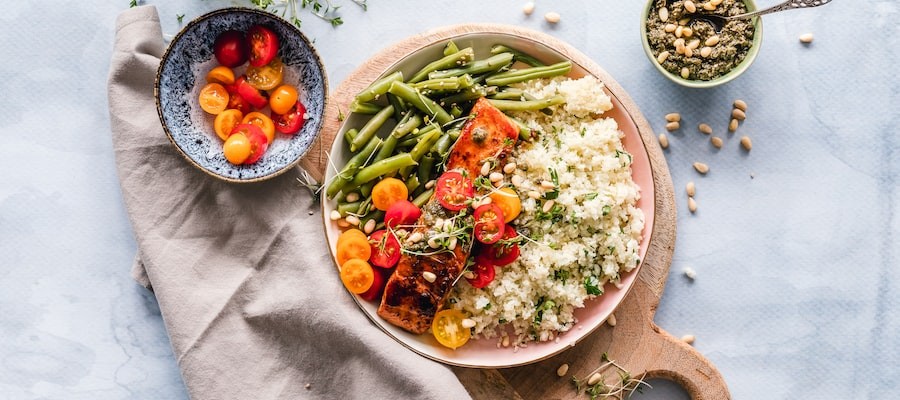
Food in Movies: The Evolution and Importance of Culinary Storytelling
Table of Contents
- Food and Film: A Brief History
- Food as a Characterization Tool
- Food as a Plot Device
- The Art of Food Styling in Films
- Iconic Food Scenes in Movies
- Food Documentaries
- Conclusion
Food in Movies: A Culinary Tour of Cinema
What is it about food that makes it such a noteworthy part of the film world? From the fancy spreads of the Titanic to the iconic fast food of Pulp Fiction, there’s no denying that food and drink have become a staple in modern cinema.
So, what is it about food in movies that makes it such a crucial component of the storytelling process? In this article, we’ll explore the role of food in movies and how it has evolved over the years.
Food and Film: A Brief History
The connection between food and entertainment goes all the way back to ancient Greece, where plays were often staged with food and drink on hand for the audience. However, it wasn’t until the advent of cinema that food became an essential part of storytelling.
Early films featured meal scenes where characters would gather at the table to eat and discuss their day. These scenes functioned as a way to show the daily routine of the characters, but they didn’t always add much to the plot.
By the 1950s and 60s, food in movies began to take on a more significant role. Filmmakers started to use food as a way to underline the class and social issues of the time. For example, in the film adaptation of the play "A Raisin in the Sun," the mother character prepares an extravagant breakfast to show her family that they can still enjoy the finer things in life despite their financial struggles.
Today, food in movies has evolved into a vital storytelling element that can reveal a character’s personality, cultural background, and emotional state.
Food as a Characterization Tool
In many films, food is used as a way to introduce and develop characters. For example, in "Julie and Julia," Julie’s love for cooking and food blogging shows her passion for life. In "Ratatouille," Remy’s cooking skills both save his life and help him realize his dream of becoming a chef.
Food can also be used to establish cultural and social differences between characters. In the movie "Eat Drink Man Woman," the characters’ interactions with food reveal their family dynamics and class distinctions. The wealthy family has elaborate dinners with exotic cuisine, while the working-class family prepares simple meals at home.
Food as a Plot Device
Food can also be used to advance the plot and drive the story forward. In "Chocolat," Vianne’s chocolate shop opens up the conservative French village’s attitudes towards love and acceptance. In "Chef," the protagonist’s career is rejuvenated when he quits his job in a fancy restaurant to open a food truck and reconnect with his son.
The Art of Food Styling in Films
Food styling in films is a crucial aspect of food in movies. Filmmakers have access to professional food stylists who work to make the food look as appetizing and beautiful on screen as possible. Food stylists can create fake foods or enhance the real ones with coloring and lighting to make them look perfect for the camera.
However, sometimes the food is an essential part of the story, and real food is used. Filmmakers must plan extensively to ensure that the food remains fresh and appetizing throughout the shoot. This requires multiple takes, rehearsing and refrigerating the food between scenes, and constantly refreshing it with new ingredients to maintain its appearance.
Iconic Food Scenes in Movies
No discussion of food in movies would be complete without mentioning some of the most iconic food scenes in film history. From the massive, pork-filled feast in "The Lord of the Rings: The Fellowship of the Ring" to the bizarre, dance-filled burger scene in "Pulp Fiction," these scenes have become an indelible part of cinema history.
Other iconic food moments include:
- The spaghetti dinner in "Lady and the Tramp"
- Sally’s memorable sandwich order in "When Harry Met Sally"
- The "Big Kahuna Burger" in "Pulp Fiction"
- The Chinese restaurant scene in "A Christmas Story"
Food Documentaries
Food is not just a part of fictional storytelling; it’s also the subject of many documentaries. Films like "Supersize Me," "Food, Inc.," and "Jiro Dreams of Sushi" explore everything from fast food culture to sustainable farming practices to the art of sushi making. Food documentaries can be an excellent way to learn about food and its impact on society, culture, and the environment.
Conclusion
Food in movies is more than just a passing detail; it’s become an essential component of storytelling. From its evolution over time to its use as a characterization tool and plot device, food has become a crucial part of modern cinema. Whether it’s real food or a staged, stylized version, the way that food is portrayed in films has a significant impact on how we view and understand the characters and their stories.